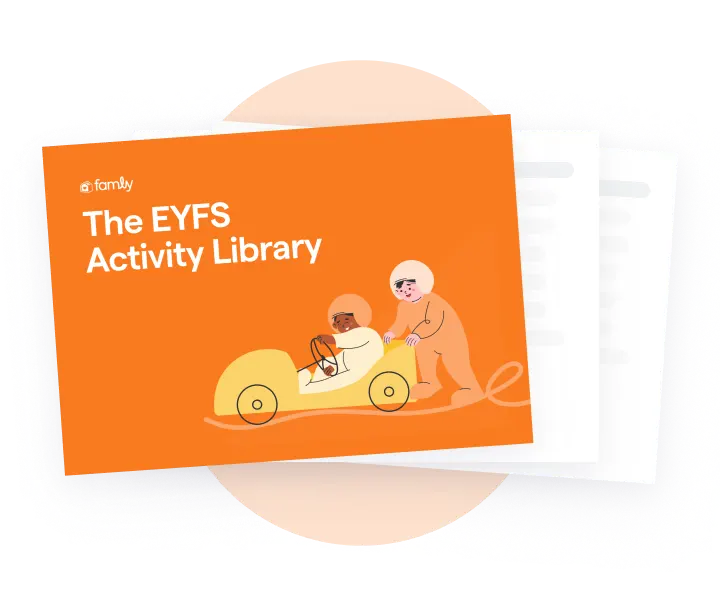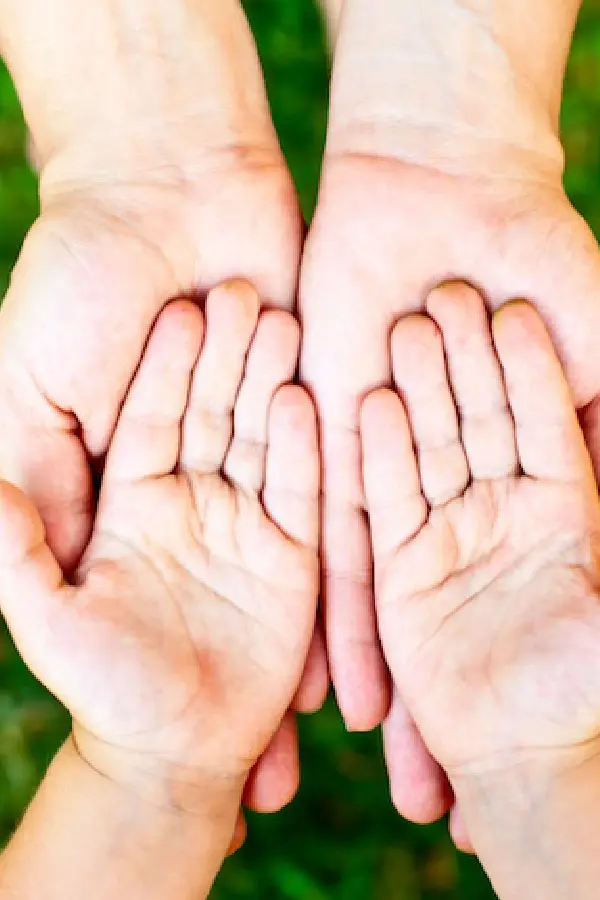settings
children
With Famly since
Why is circle time so important?
Circle times can be used for introducing plans for the day, discussing important matters, or as a way to develop class relationships. It’s also a great tool for reinforcing the sense of community and improving social skills and listening skills in the Early Years. Plus, it's also a great physical activity for young children.
Circle time activity ideas for young children
1.Why not start with some movement circle time games like Fruit Salad?

How does this support quality circle time?
This circle time game is great for getting children energised and ready to engage. The game supports taking turns, being aware of space, and listening.
How to do it:
All the players are divided into groups of fruits. This is easily done by an adult walking around the circle and assigning each child "apple, banana, orange.", for example. A teacher or chosen child calls out one of the fruits and each child assigned that fruit has to swap to another seat. While each child assigned that fruit is out of their seat, the person who called the fruit tries to sit in an empty spot. The child (or teacher) left without a seat is the next to call a fruit. If the person in the middle calls ‘fruit salad’, everyone in the group has to change spots at the same time!
2. Add a guessing game to your circle time routine

How does this support a successful circle time?
This circle time activity promotes problem-solving and paying attention. It can also help form better relationships within the group, as children begin to focus on who else 'belongs' but is missing.
How to do it:
Choose one child to be a ‘guesser’. That child then leaves the circle and covers their eyes. Then another child (or one of the teachers) is chosen to be the bug. The ‘bug’ sits in the centre of the circle and is covered by something (you could use a sheet, or other light fabric if a blanket is too heavy or hot) .
Once the bug is hidden, the guesser rejoins the circle and guesses who the bug is.
What you need:
- A Blanket (or something else that hides the 'bug')
3. Mix up your circle time activities with a musical game

15 Nursery Rhyme Songs by Famly
How does this support high-quality circle time?
The repetition in nursery rhymes and songs is perfect for developing vocabulary. What’s more, some of the 15 nursery rhyme songs listed come with actions or movements, supporting children to develop fine- and gross-motor skills.
How to do it:
If this is your group's first circle time, some simple action rhymes and songs are a great place to start. You just sing the songs and do the actions!
What you need:
- A musical instrument or a music player
- Enough space to do the actions to the songs!
4. Get active with your circle time activities!

Elephant Ball by Great Camp Games
How does this support a successful circle time?
In primary schools and secondary schools, circle time often means sitting down. That's not necessarily a bad thing, but children in the Early Years simply don't have the ability to sit still for that long! This physical activity gets children up on their feet and communicating as they pass the ball to one another.
How to do it:
Ask the group to each stand with their legs apart. The goal is to roll the ball through the legs of other players. Encourage children to call the name of the child they roll the ball to, as it's passed between players. Adults can join in with this one too, or act as 'retrievers' as the ball leaves the circle. And don't forget to make sure everyone feels involved by passing to children who haven't yet received the ball.
What you need:
- A foam ball
5. Speak and listen carefully for this quiet circle time activity

How to play telephone by Empowered Parents
How does this support quality circle time?
Developing speaking, listening, and turn-taking skills are some of the core benefits of a great circle time. This game works well as a final activity as it requires children to engage with concentration and patience - perhaps after they've burned off some energy with some more active circle time games!
How to do it:
Come up with a simple sentence and whisper the words into the ear of the first child. Tell them to share it with the next child until it goes the whole way around the circle. The child who is last to hear the sentence gets to say it out loud, usually having completely changed!
Part of the fun of the telephone game is understanding where in the circle the sentence changed, as the children recall what they thought they heard.
The big ideas

6. Bring a bear hunt to your circle time

Hunt the Honey by Teaching Ideas
How does this support good-quality circle time?
Another excellent way to practice turn-taking as well as speaking and listening. This game is a great mix of physical activity and patience, with a few problem-solving skills thrown in.
How to do it:
No, not the popular story - this time it's the bear doing the hunting! During circle time, choose one of the children to be the bear. The bear 'sleeps' in the middle of the circle, guarding his 'honeypot' - this can be anything easily held by the children, such as a bean bag.
While the bear has their eyes closed, another child is chosen to steal the honey. The child with the stolen 'honey pot' then sits back down in the circle and hides it behind their back. The other children sing:
Isn’t it funny
That a bear likes honey.
Buzz Buzz Buzz.
I wonder why he does.
Wake up, Mr Bear!
The bear then wakes up and finds the thief by asking each child "Do you have my honey?". If the bear finds the child with the 'honey' they chase the thief around the circle. If the thief gets caught, they become the bear in the next turn.
What you need:
- An unbreakable object for the 'Honey Pot' like a bean bag or ball.
- To sit in a circle with enough space to run around the outside safely.
7. The 'key' to a high-quality circle time

Keeper of the keys by Wild Earth
How does this support good-quality circle time?
This game requires excellent listening skills from the keeper. It supports emerging empathy and respect, as well as encouraging self-regulation in the rest of the group - the game only works if the rest of the children play along by being as quiet as possible.
How to do it:
The keeper of the keys sits in the centre of a large circle, with their eyes covered and the keys on the floor in front of them. The children then take turns trying to sneak towards the keeper and grab the keys. If the keeper hears any movement, they try to point in the direction they heard it. If the keeper points at someone, they have to go back to their place in the circle and start again. The game ends if a child manages to sneak up and collect the keys without being pointed to by the keeper.
8. Put some movement into your circle time activities

Pass the Movement by PreK and K Sharing
How does this support a successful circle time?
Focusing on how a movement is made and then copying it for yourself requires a lot of thought and concentration for young children. For some, their older peers may already be able to complete a certain movement (like hopping on one foot), so the group can support teaching a new physical skill.
How to do it:
Start with something rather easy like crossing your arms or putting hands together and let the children pass the movement around the circle, by each mimicking the movement of the previous child. You can also make it a bit more difficult and ask the little ones to not only remember the previous movement but also add their own and create a simple sequence.
9. Pack your bags for the end of circle time

I packed my suitcase by Activity Village
How does this support quality circle time?
If children are at the stage of learning and development where you can incorporate the alphabet into this game, you can use each object to support learning the phonics for that letter. However, if the children are not yet there, just encourage adding a new object that you might need on holiday, like suncream. You can then talk about why that's useful!
How to do it:
The first player says ‘I’m going on holiday and I am going to pack...’ and fills in the gap with something beginning with 'A'. The next person has to repeat what they’ve just heard and add their own item.
"I’m going on holiday and I am going to pack... [the thing beginning with 'A'] and [something beginning with 'B']
Hold up the letters and support children with the sounds as they need it and encourage them to help one another - it's not a test after all! Keep going until the children can't add another object!
10. From a bear hunt to a circle time colour hunt!

Colour Hunt Spinner by Craftulate
How does this support high-quality circle time?
This circle time activity is a good opportunity to practice turn-taking and attention skills, as well as learning colours, of course!
How to do it:
Take a colour spinner like the one from the game Twister or make a DIY one using the instructions from the link above. Let each child take turns spinning the arrow and find something in the room that matches the colour the arrow lands on. You could try a rule that the items should not be repeated, so each player has to find their own item for the colour they get.
What you need:
- A Colour Spinner
.svg)
Whoops! Looks like you need to accept marketing cookies to see this video. Don’t worry - they’re fresh out the oven.
Accept marketing cookiesPlease note: here at Famly we love sharing creative activities for you to try with the children at your setting, but you know them best. Take the time to consider adaptions you might need to make so these activities are accessible and developmentally appropriate for the children you work with. Just as you ordinarily would, conduct risk assessments for your children and your setting before undertaking new activities, and ensure you and your staff are following your own health and safety guidelines.
Get a personal demo now
Get a guided 1-on-1 tour of the whole platform. See what features are the best fit for you, and ask us as many questions as you like.
Book free demo










